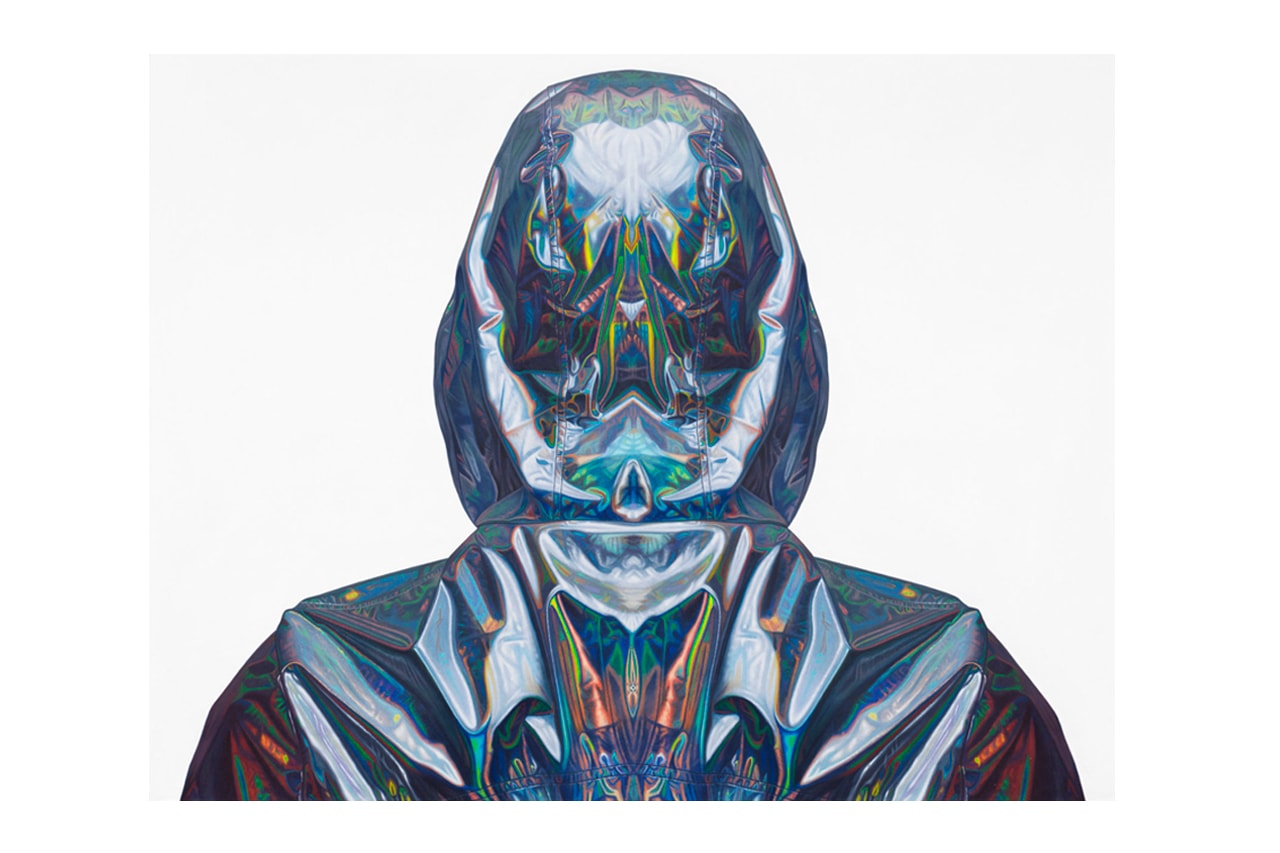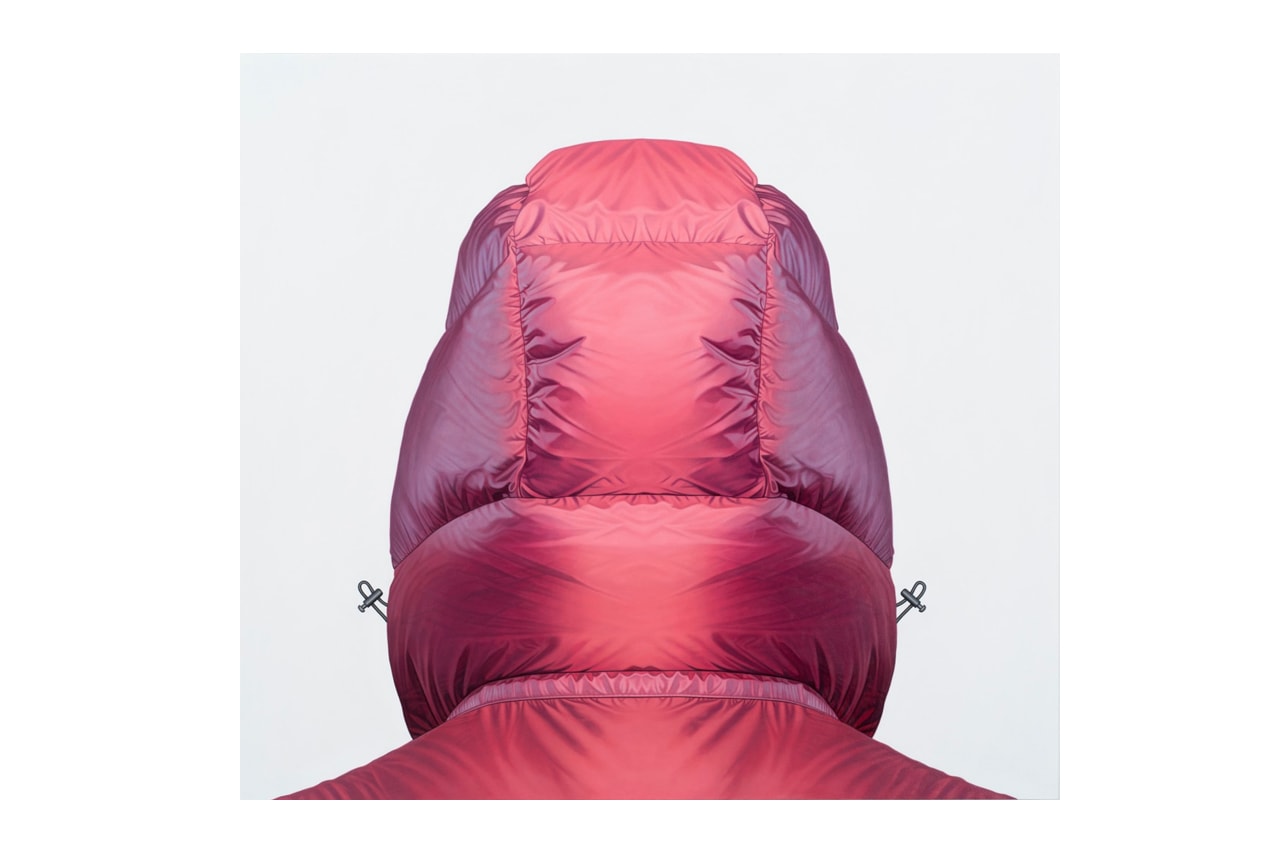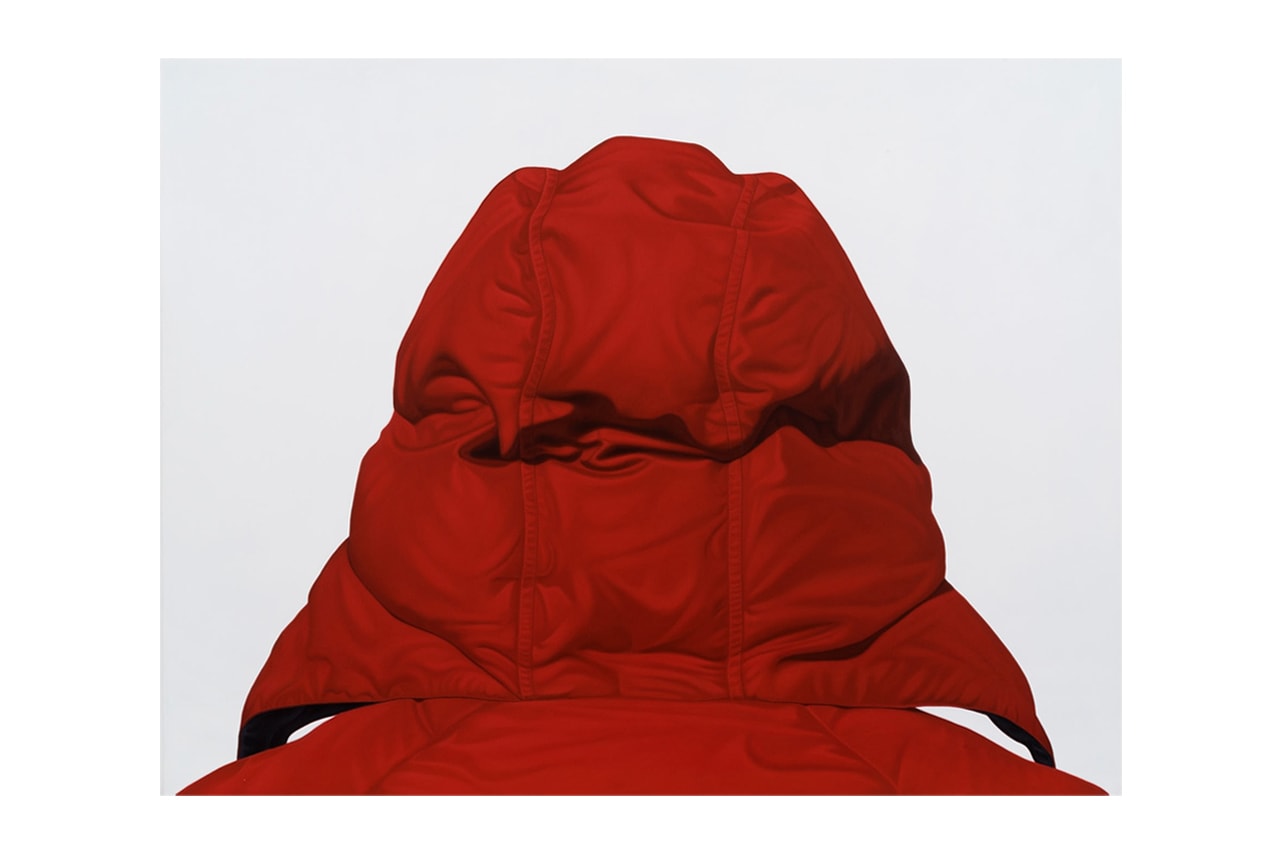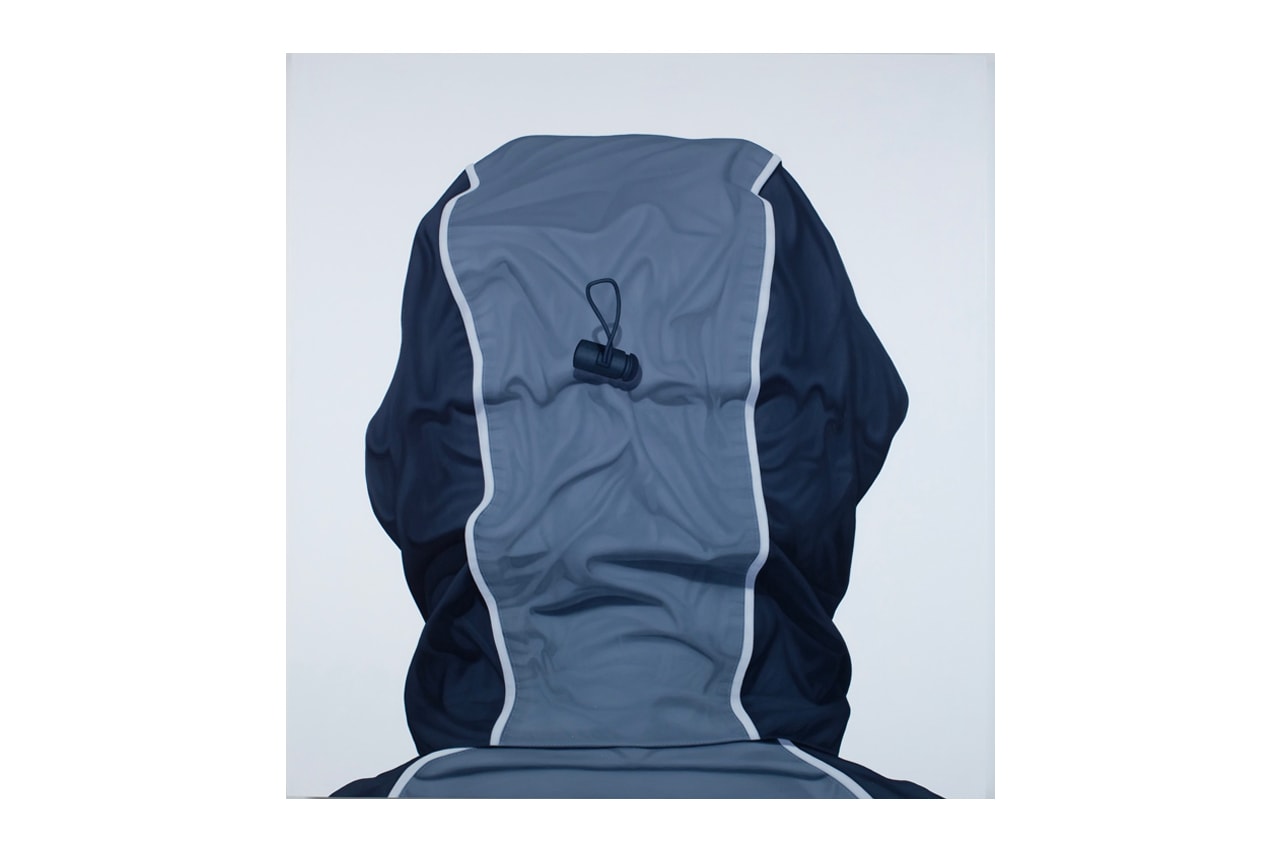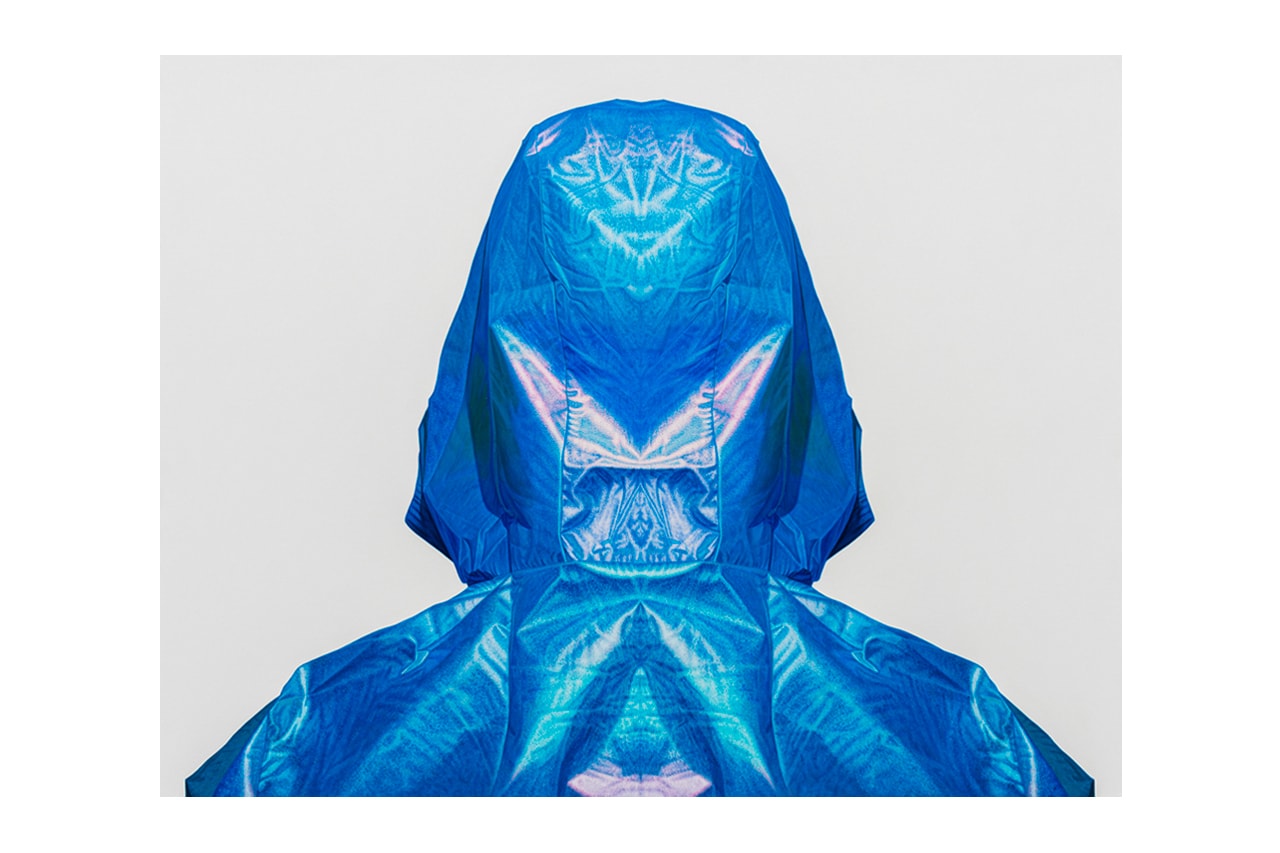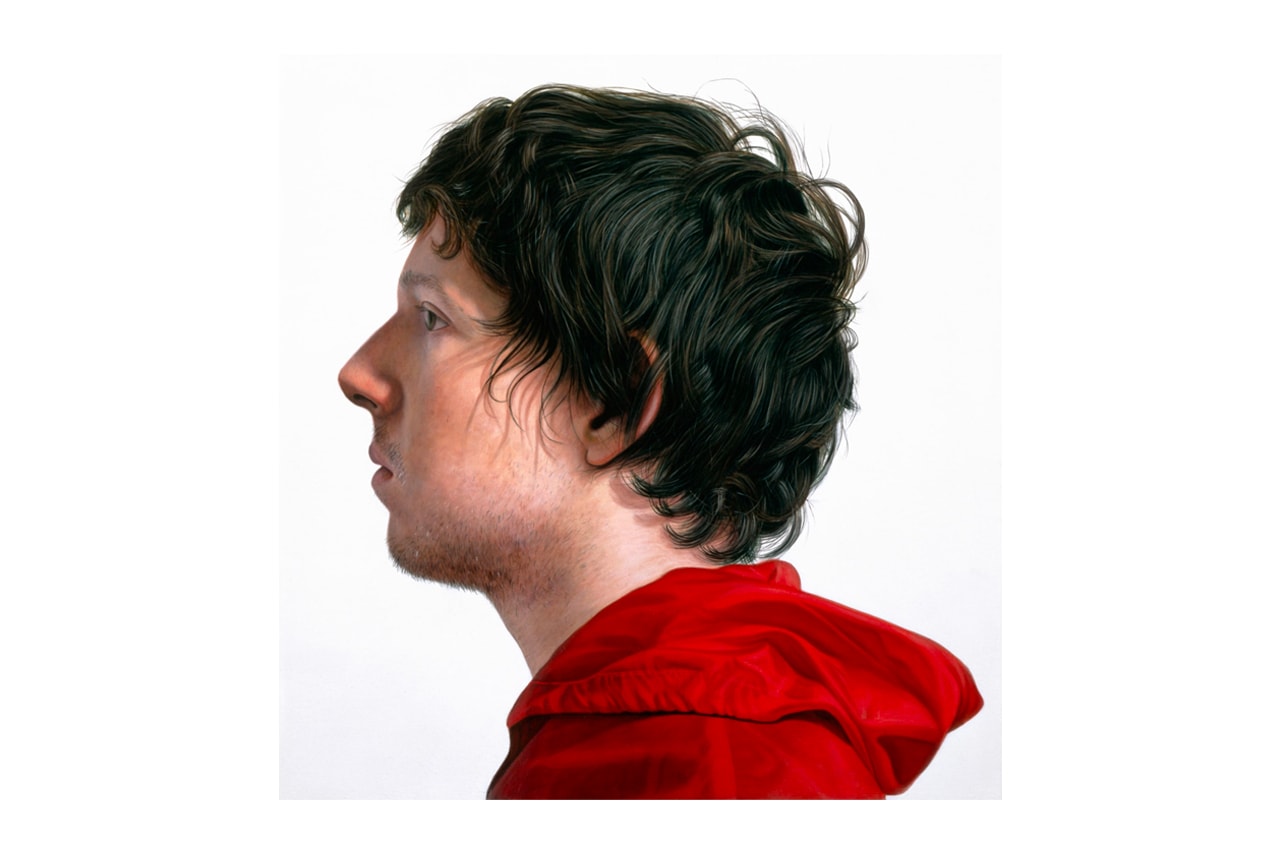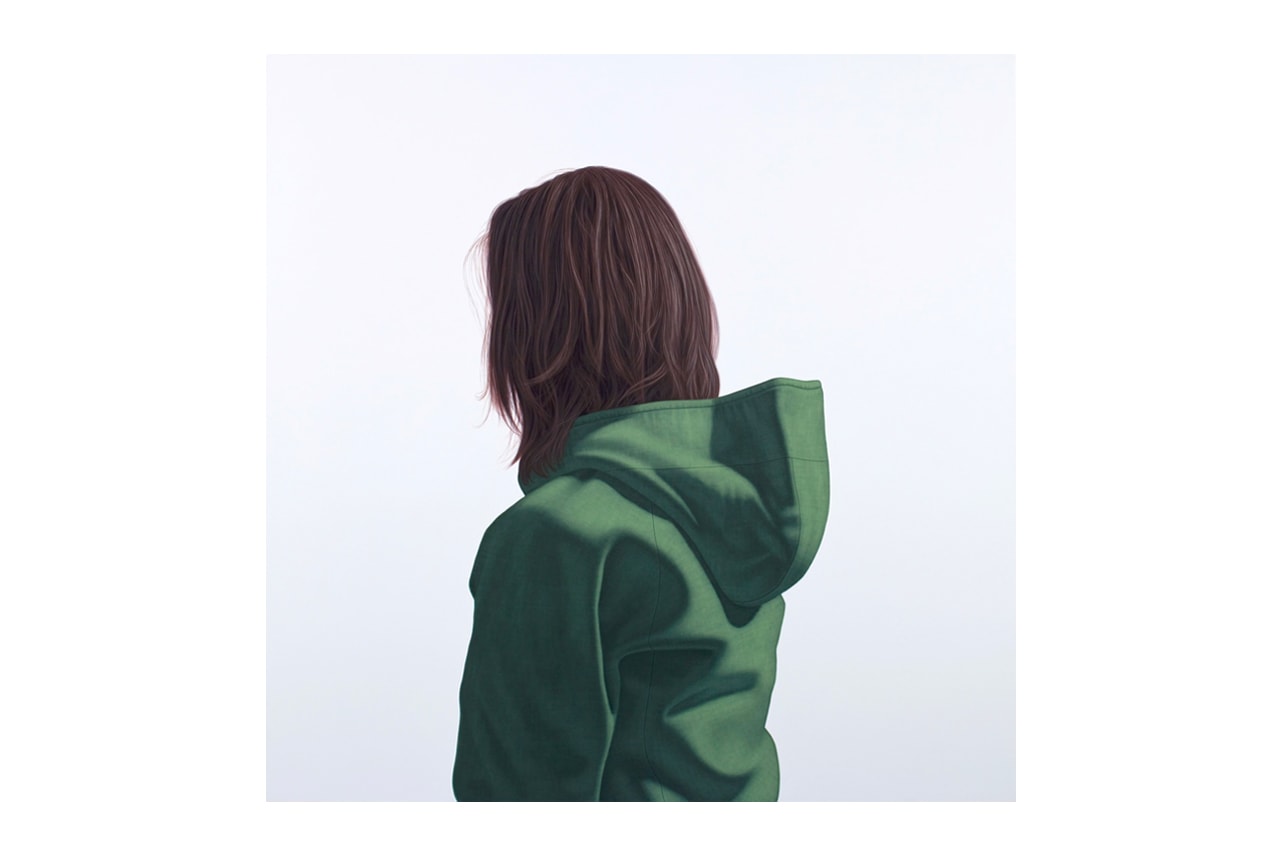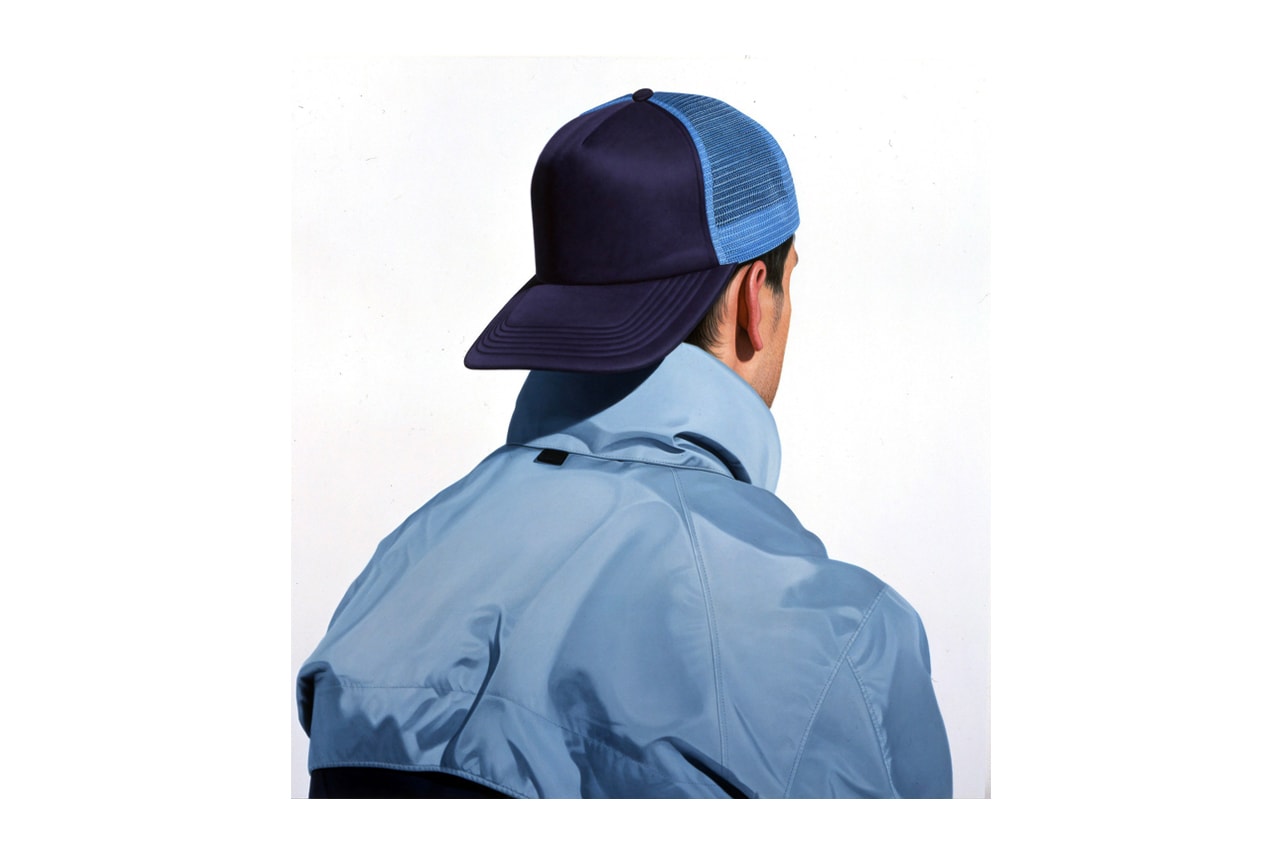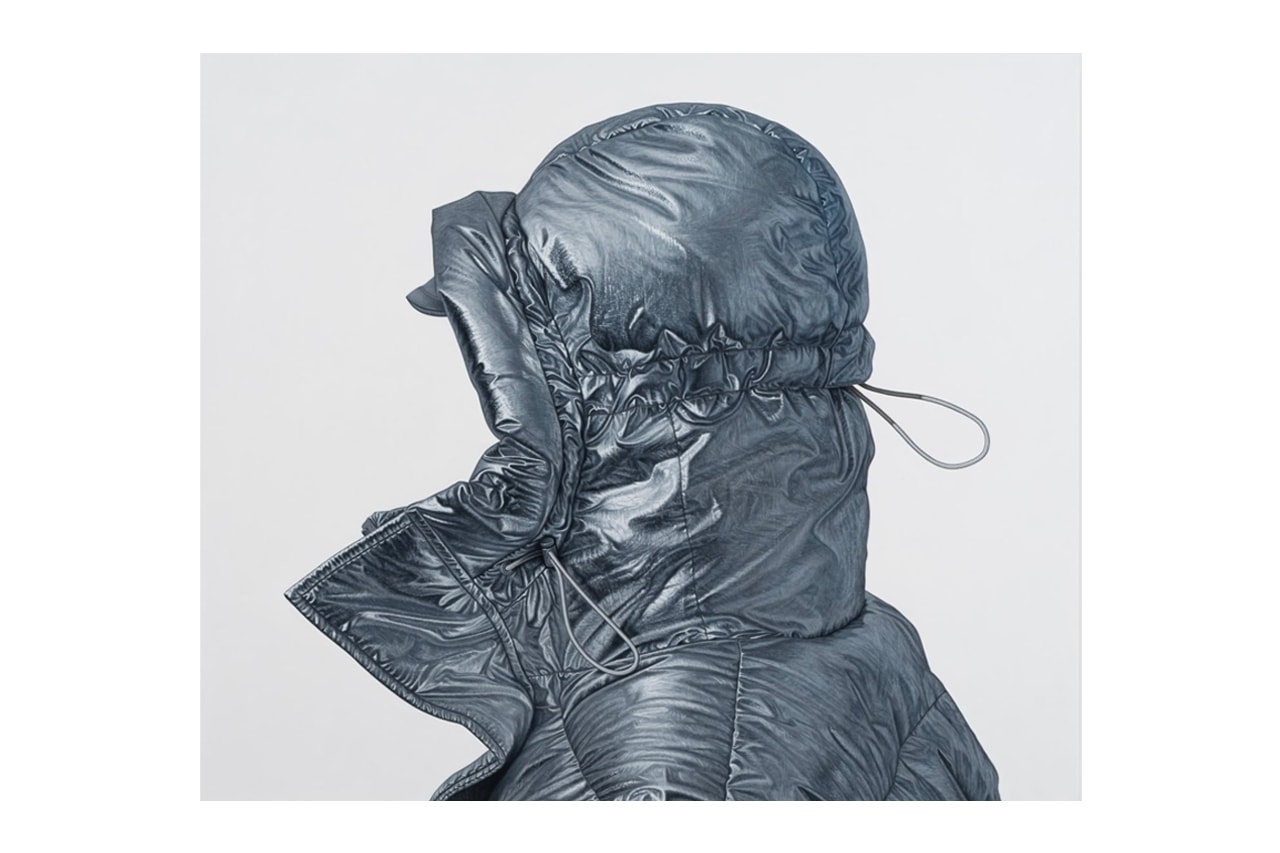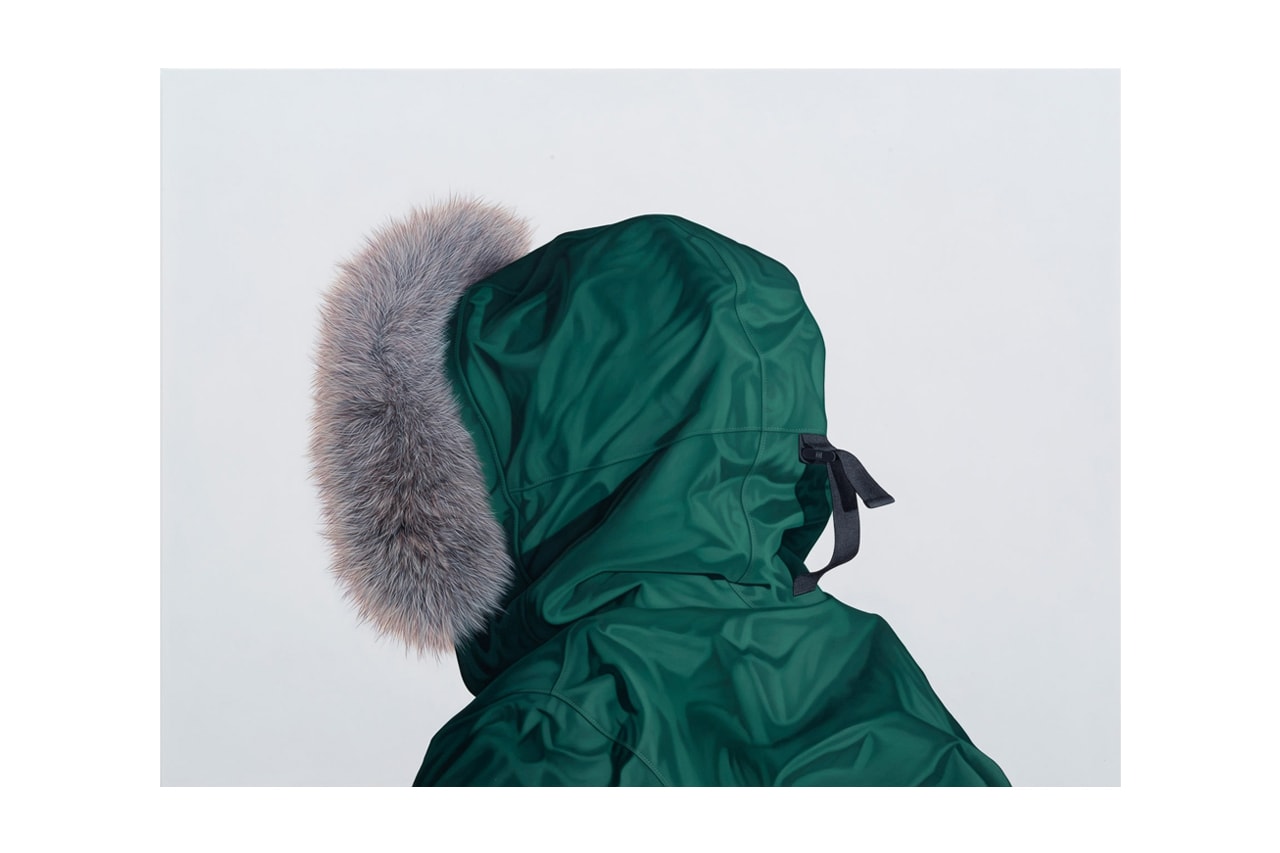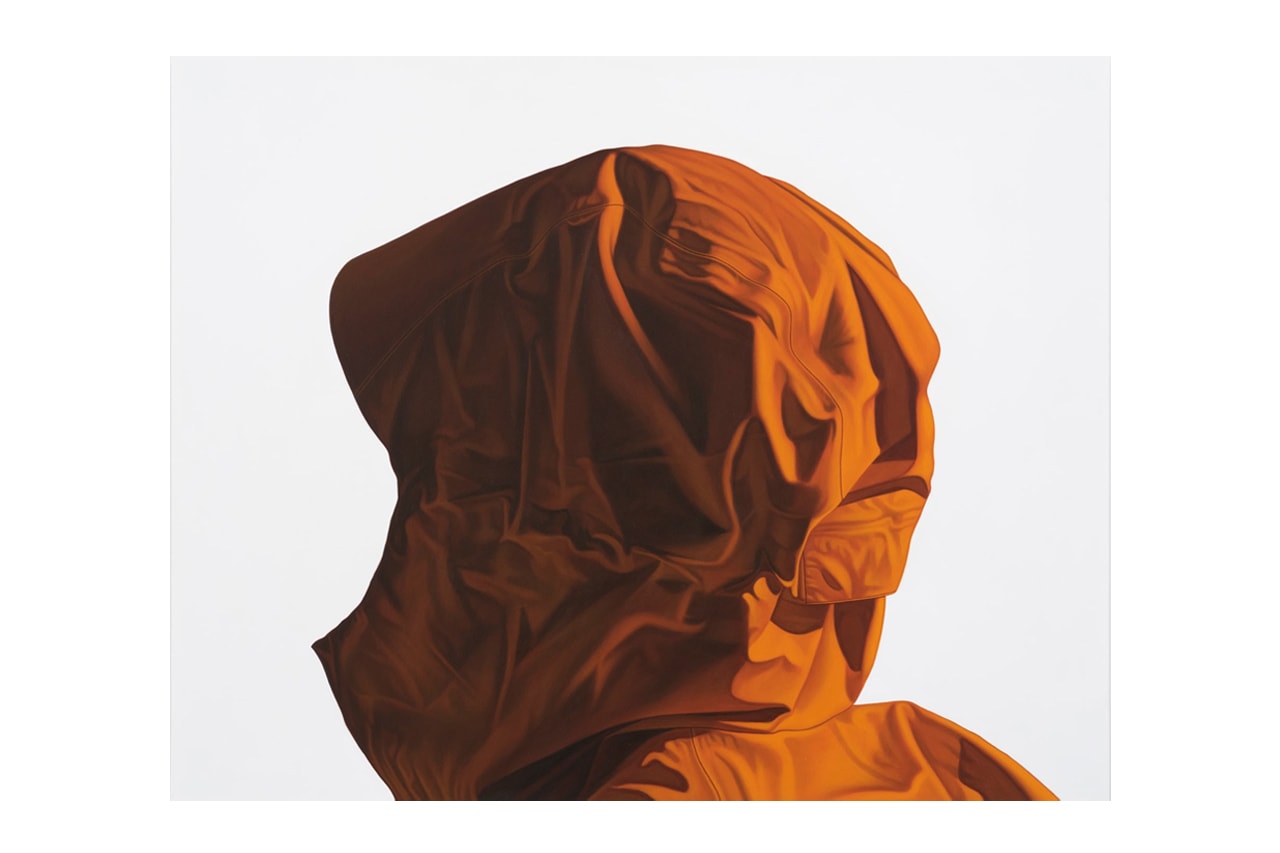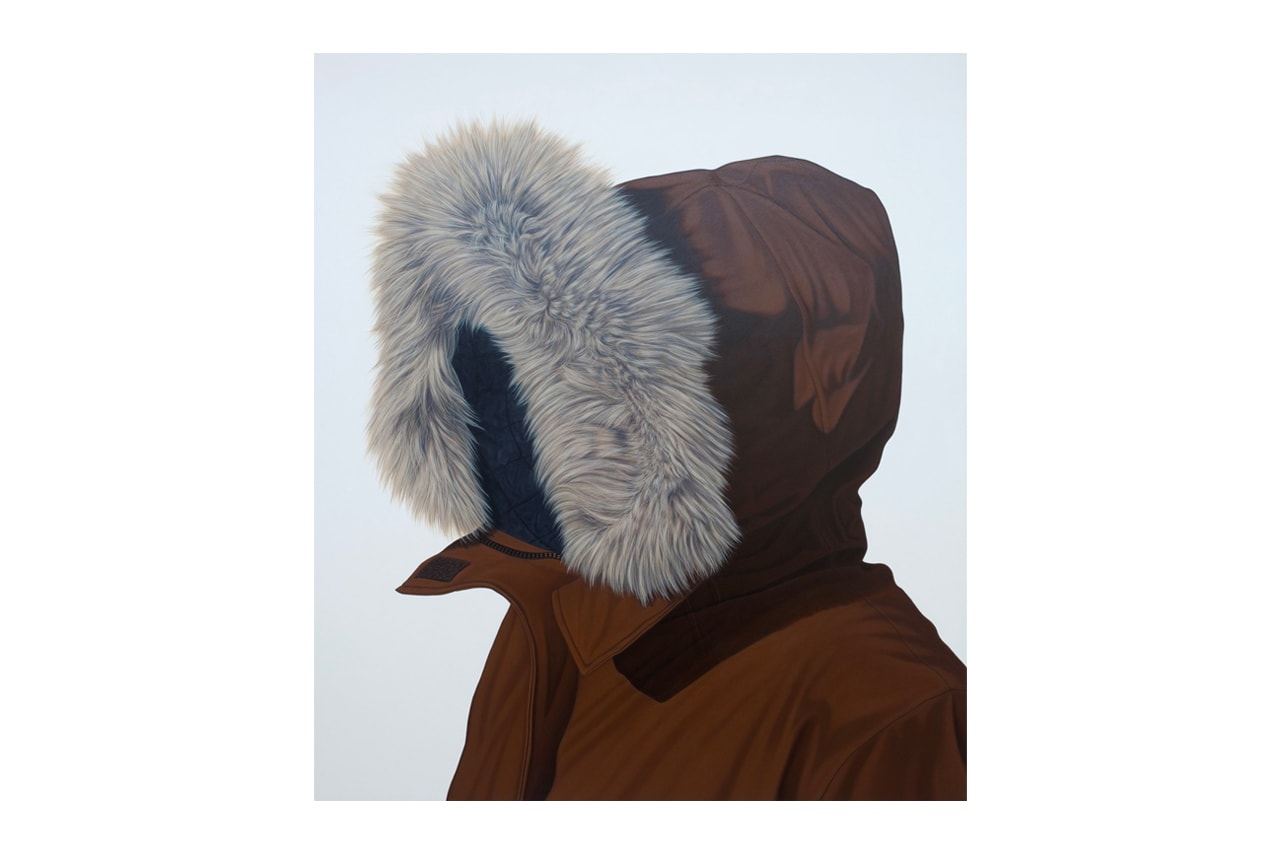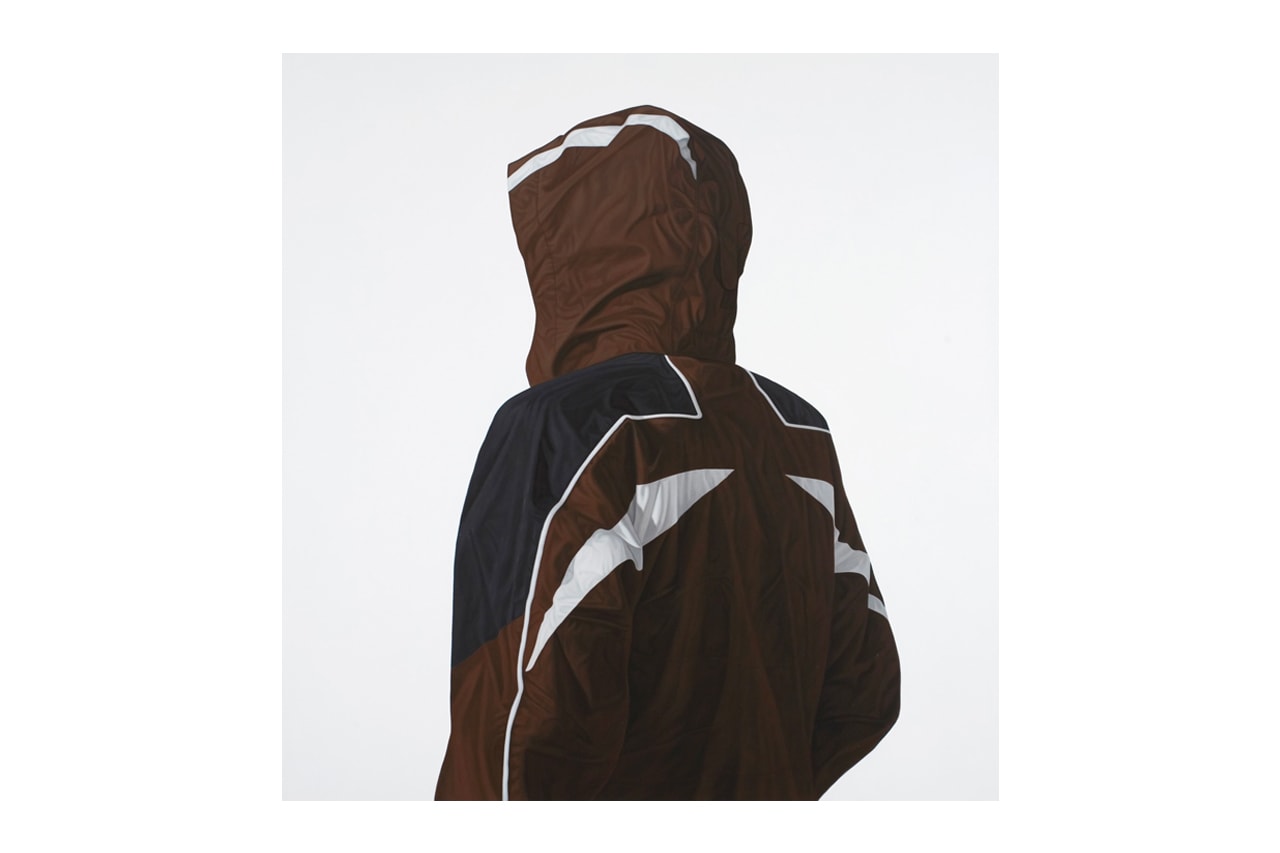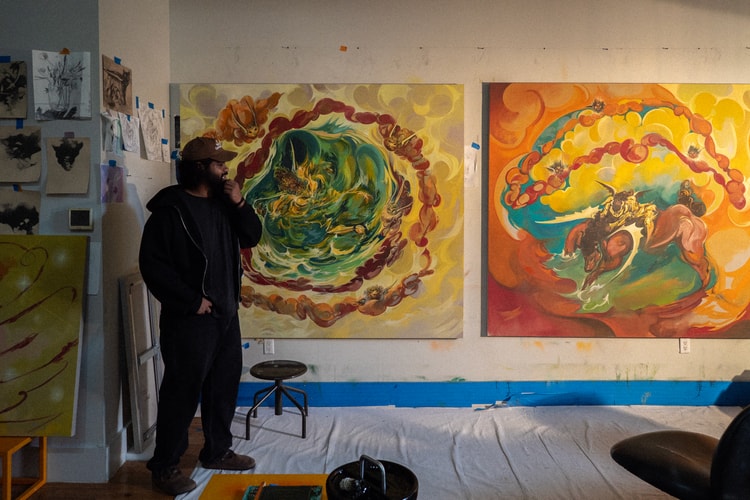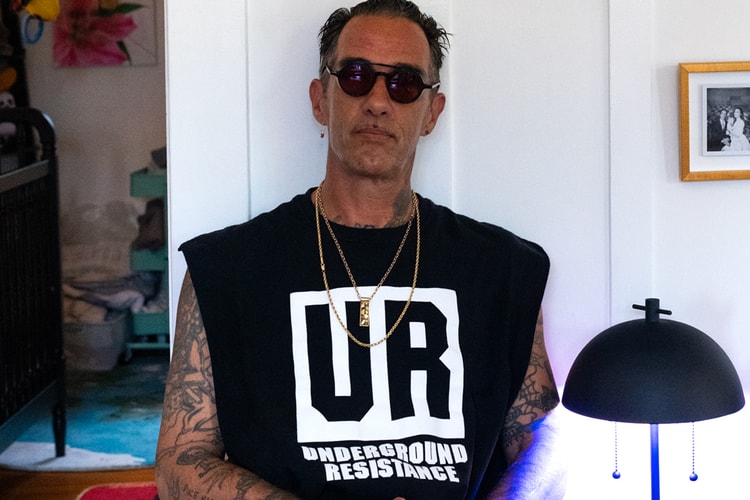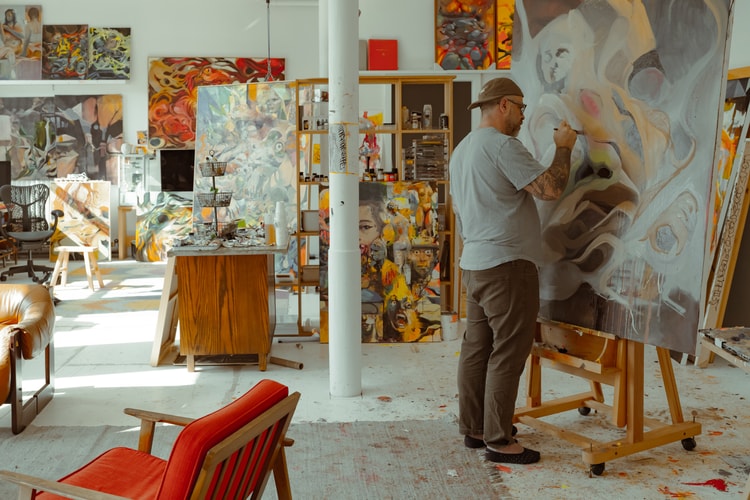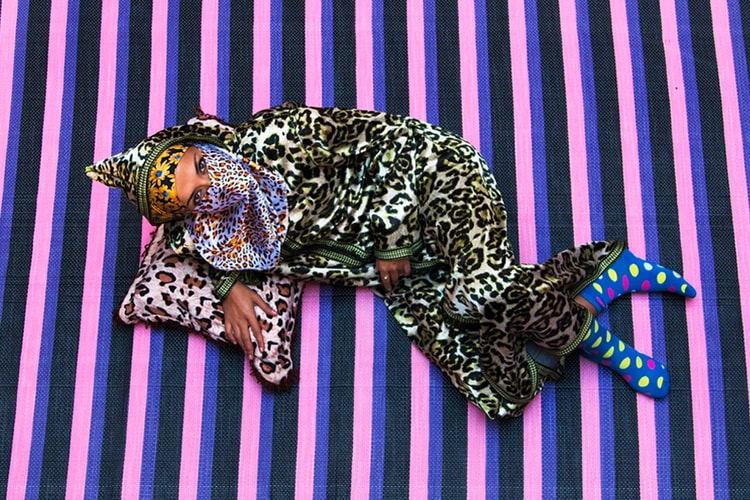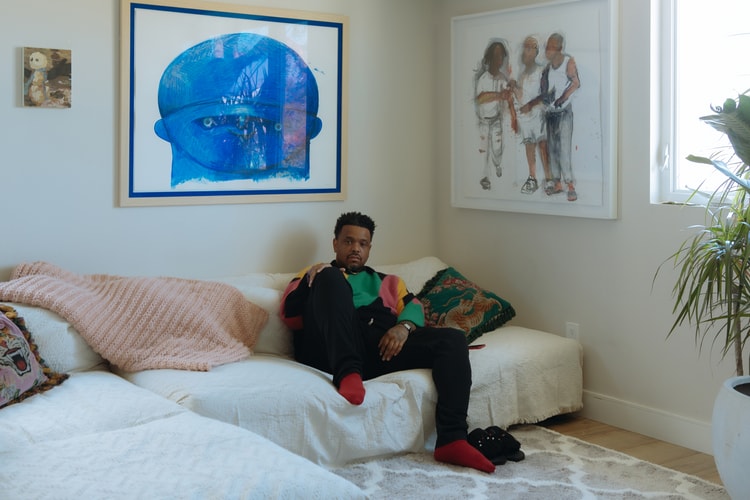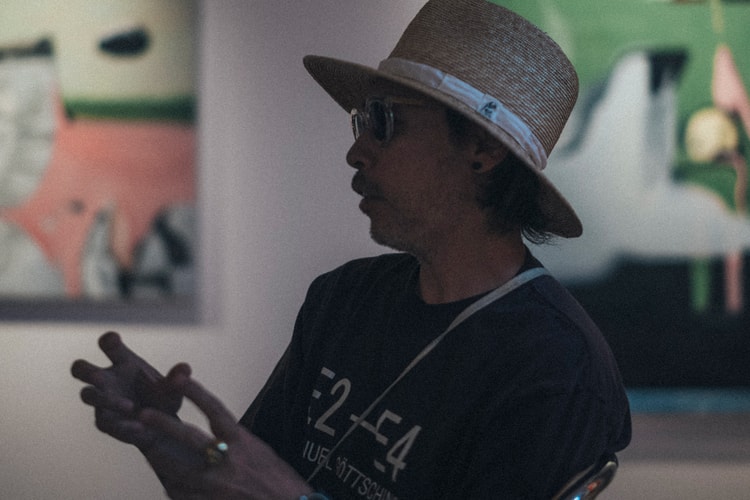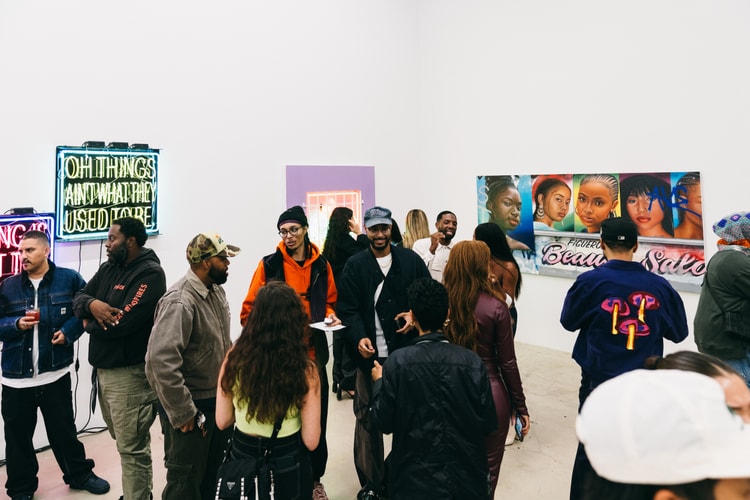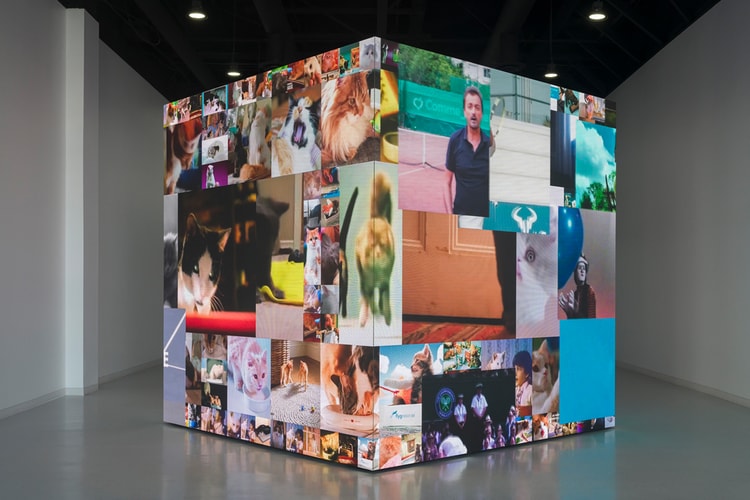

Mystery pervades the portraiture of Canadian artist Karel Funk. Based in Winnipeg, each of the subjects within his photorealistic paintings are disinterested in the viewer’s gaze, emblematic of their facial and bodily orientation. Rather, Funk bypasses the human figure by utilizing the fashion portrayed in his artwork as a focal point to probe into the sartorial zeitgeist of the present, and build a bridge with the traditions of portraiture from art history.
Technical nylon and polyester replace the ornate cuffs and velvet robes the past. Like a drawing within an empty notebook, Funk’s large-scale paintings are set against a white background and feature the silhouette of elaborate outerwear — from highlighter yellow raincoats, iridescent windbreakers to fluorescent pink puffer jackets. His proclivity towards this aesthetic first began when he moved to New York and started seeing a connection between the classic paintings at the Metropolitan Museum of Art and the contemporary fashion worn by onlookers.
“One day I saw a friend in profile wearing a hooded rain jacket with the hood up so all you could see was his nose and a little bit of his mouth,” Funk tells Hypeart. “The modern synthetic hood was contemporary, but it could also be a bridge to the past referencing renaissance hoods.”
Through unconscious repetition, Funk began to form a consistent thread within his practice, by taking the overlooked, but unique shapes and textures of modern outerwear, and executing them in a way that adheres to the realism of classic paintings from the Renaissance and Dutch Golden Age. From a distance, his work looks like a photograph, but upon closer inspection, each composition reveals hundreds of intricate acrylic layers that take two months on average to complete.
Admittedly, Funk reveals that he’s largely moved away from showing the human beneath the surface entirely to center the jacket as a “muse” and to “find a struggle to paint information, form and structure in the most interesting and intense way possible.” To retrace the threads of his aesthetic, we caught up with the artist to discuss his practice for the latest Hypeart Visits.
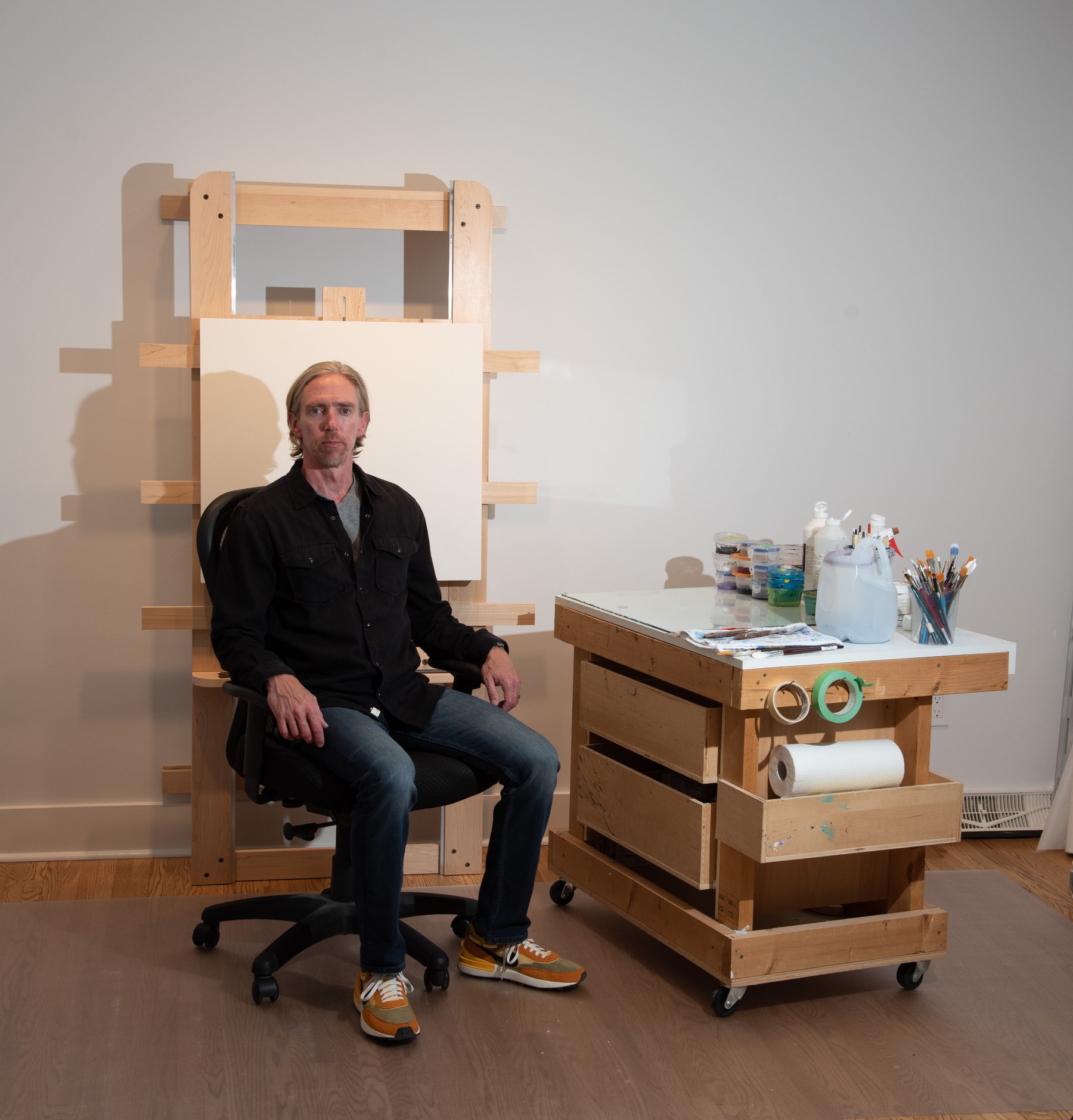
What were your earliest forays in art and what inspired you as a child?
I can remember always drawing from an early age. My dad is an architect and there were books on architecture and artists like Wassily Kandinsky and Pablo Picasso around the house. I remember looking at these, so they played a part in my interest in drawing. I’ve also always been interested in some kind of realism and some of my favorite drawings back then were of birds.
When did art become a reality or was it always your determined career choice?
I never really thought of art as a career choice when I was younger, it was just fun. I was drawing right up to the age of 12 or 13 but then started to get interested in BMX and skateboarding. Eventually I focused on skating and it really consumed me for years. I started to have dreams of being a professional skater around the age of 17 and took road trips with friends from my home in Winnipeg down to San Francisco, L.A., and San Diego to find all the cool skate spots.
But as I approached 20, I was starting to get hurt way too much trying crazy tricks and just got scared of trying to go to the level you’d have to be at to be a pro. So slowly I got back into drawing and started to lose interest in skating. Eventually I applied to The University of Manitoba art school, got in and started to get very serious about drawing and then painting. It was only in my second to third BFA year that there were discussions with some fantastic professors who encouraged being a full time artist as a possibility and that’s when I really wanted to go for it.
“The modern synthetic hood was contemporary, but it could also be a bridge to the past.”
What do you believe you would have done if you didn’t pursue art?
Honestly that is a scary thought, I have no idea what I would had have done. I had no backup plan and feel lucky that it worked out the way it has. I worked lots of jobs before going to art school and during it, but none really felt like a career fit for me. I was a part time janitor for a few years after I got my BFA. It was a fun job at times and I painted in my free time after work but after a few years of this, I really needed to make another push so I applied at schools for my MFA.
How about this hyper-surreal aesthetic that you’re known for. Can you talk about how and why you first gravitated towards documenting the silhouette of outerwear?
Well, when I started to paint seriously during my BFA, I just loved trying to make things look real and it was a bit of a struggle for me to find a cohesion between a subjective realist technique and conceptual ideas in the paintings. It wasn’t until I moved to New York City to start my MFA at Columbia when things started to come together. I loved to go the Metropolitan Museum of Art and look at the renaissance portraits and slowly over my first year I started to make portraits that were inspired by them. I wanted to make portraits that were contemporary, urban and realistic but also had a reverence for the past, especially the renaissance portraits that were inspiring me at the time.
One day I saw a friend in profile wearing a hooded rain jacket with the hood up so all you could see was his nose and a little bit of his mouth. Something about this pose made an impact on me and it felt like it could be what I was looking for. So I created a painting of him and it started me down a good path. The modern synthetic hood was contemporary, but it could also be a bridge to the past referencing to renaissance hoods. I didn’t realize this at first, it took a few more portraits like this first one for me to really start to see the potential the hood had for me.
Do you have a collection of outerwear yourself or do you just take fascination in it as a source image?
I definitely love hoodies, hood jackets and thin bomber or causal jackets. Some of this goes back to my skating days for sure. We always had tons of hoodies and some of the skate companies at the time were making cool jackets. I do have a pretty good collection building up from all the jackets I use for source material.
Each painting is almost photographic in detail. How long does one take to create and what is your studio process like, from earliest idea to final mark?
It takes about two months, give or take, depending on the size or complexity of the painting. I paint very slowly. I start with photographing the jackets and I’m very particular how all the folds, creases, light and shadows create forms. I’ll use tape, clips and stuff padding under the jackets to try and keep folds and creases where I want them, so there is a little bit of sculpting at this stage.
I can take hundreds of photos with slight variations on posing and constantly moving the light source around playing with the folds and crease searching for the right combination that inspires me. Then there is some photoshop work for a few days, more so with this newer work, then it’s into the painting process where I build of the artwork with very thin layers of acrylic paint over a few months. And I usually work on one painting from start to finish.
“The jacket has become the sole muse, or tool, to satisfy my desire to find a struggle to paint information.”
You present familiar garments in an unordinary light. How would you describe your practice in your own words and what themes do you juggle, if any?
Now I’m much more interested in a completely anonymous or abstract reference to the figure under the jacket. In the last few years I’ve really tried to start making the paintings as complex and full of intensity as possible, but at the same time simplified and distilled them to the their purest essence. I’ve always been looking for this balance in some way, even when the figure was present where you could see parts of their faces, but now I’m really interested in I guess some kind of realist abstraction, where the figure under the hood no longer matters and it’s just the jacket’s surface that inspires me and gets me to the place I need to be to find the beautiful struggle to make a painting.
You also largely veil the human subject. Why so?
The veiling of the subject early on was a way to make a portrait contemporary, mysterious and at times anonymous when I would hide the subject’s identity. And it was, as I mentioned, a way to show reverence to Renaissance portraits with hoods and some Spanish painters like Francisco de Zurbarán, both of which I was obsessively looking at the time. But now I’ve moved away from this a bit and the jacket has become the sole muse, or tool, to satisfy my desire to find a struggle to paint information, form and structure in the most interesting and intense way possible — but also, in the most clean and simplified way. The importance of the figure under the jacket is fading.
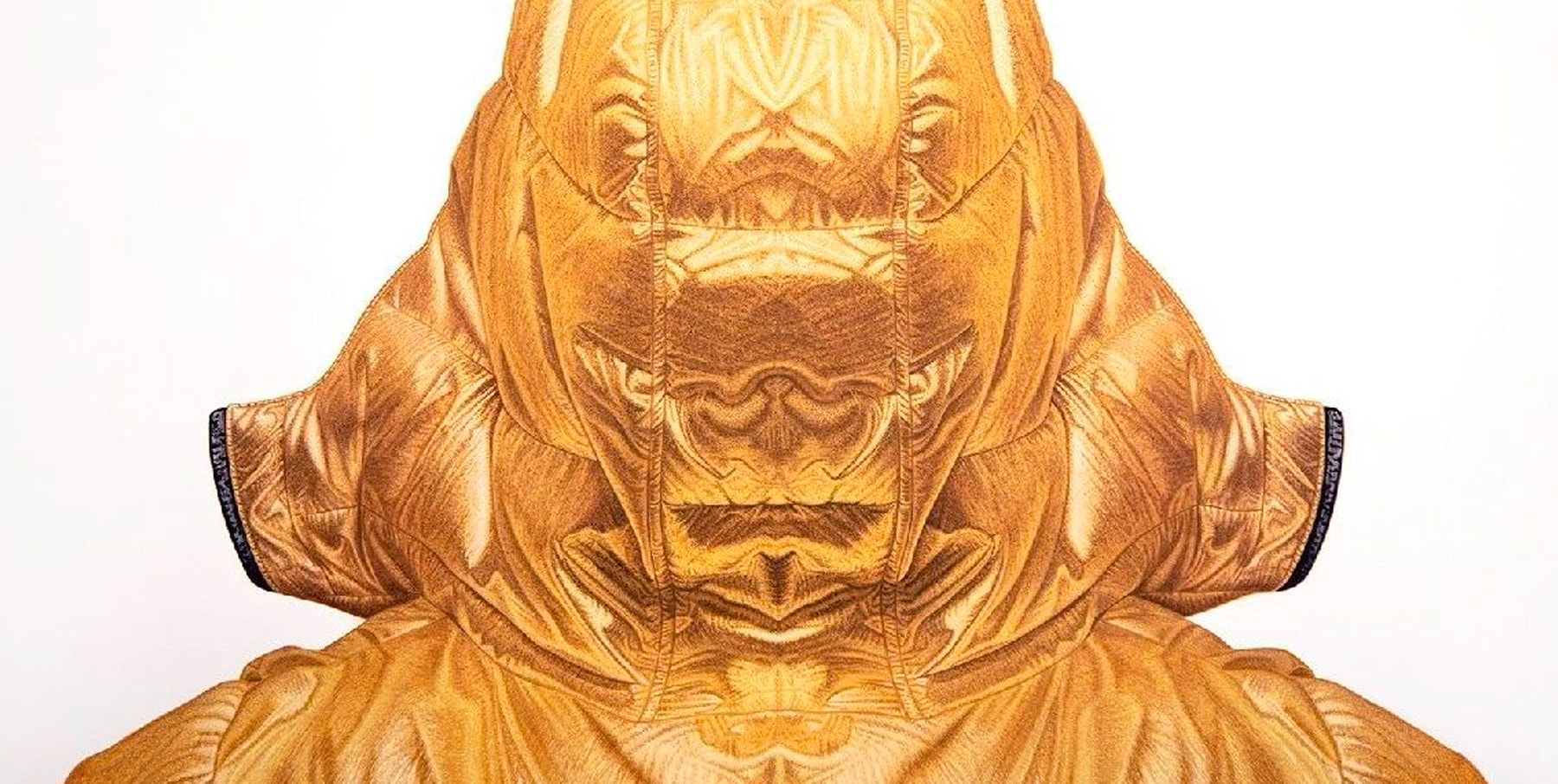
Is fashion a field you’d like to pursue further, say designing?
I do like fashion and to some extent I try to keep up with current trends, but I don’t really think of designing. It’s more fun to go shopping and discover cool stuff.
How about upcoming projects or exhibitions?
I do have two solo shows coming up, the first will be in 2024 in Europe and we are just in the early stages of finalizing details. The other is at the beginning of 2025 at 303 Gallery. So I’m already planning out my studio time carefully. Because I paint slow it’s very hard to rush the paintings so I’ve learnt over the years to try and give myself extra time so I don’t panic too much when the shipping dates approach.
All artwork by Karel Funk for Hypeart.



